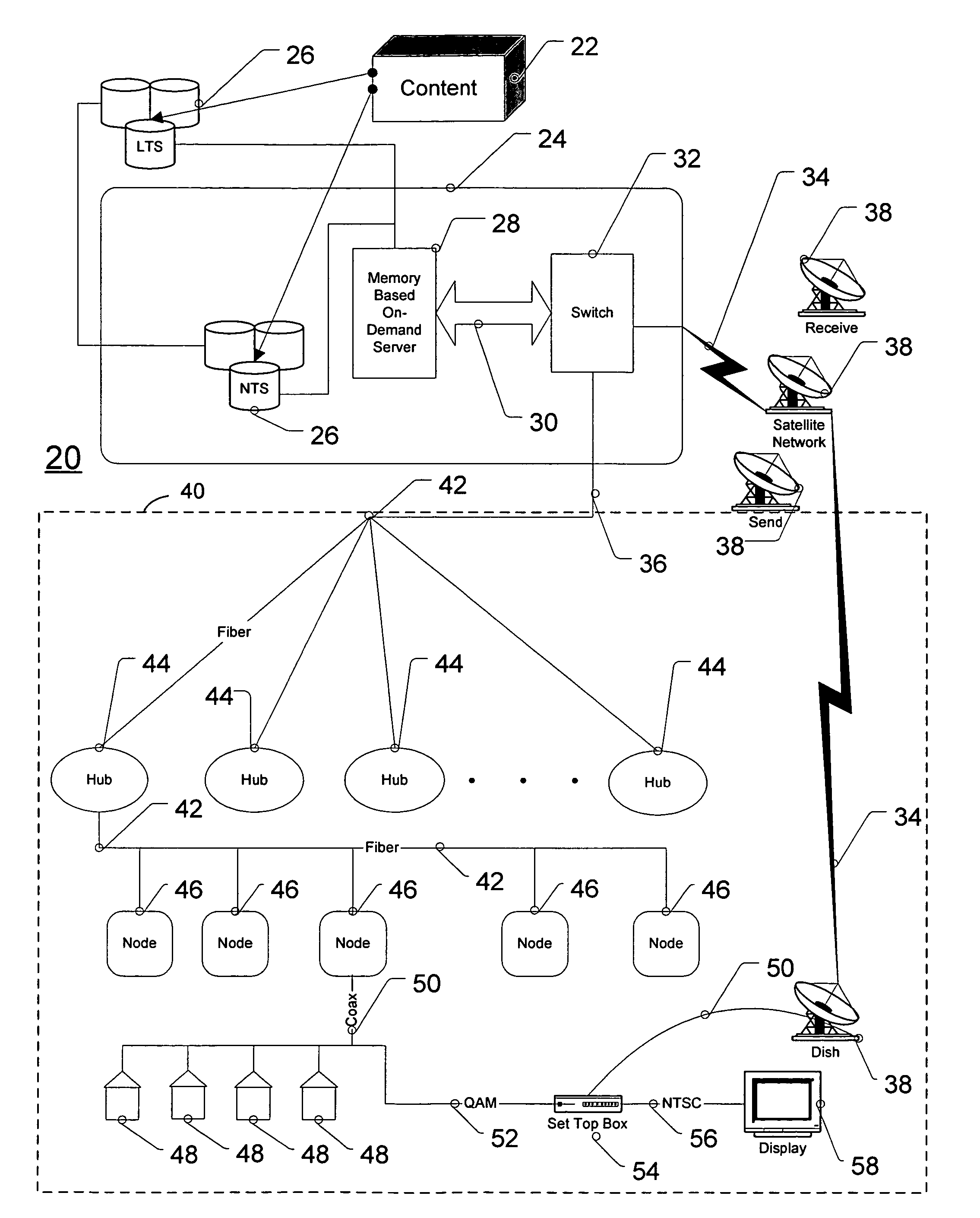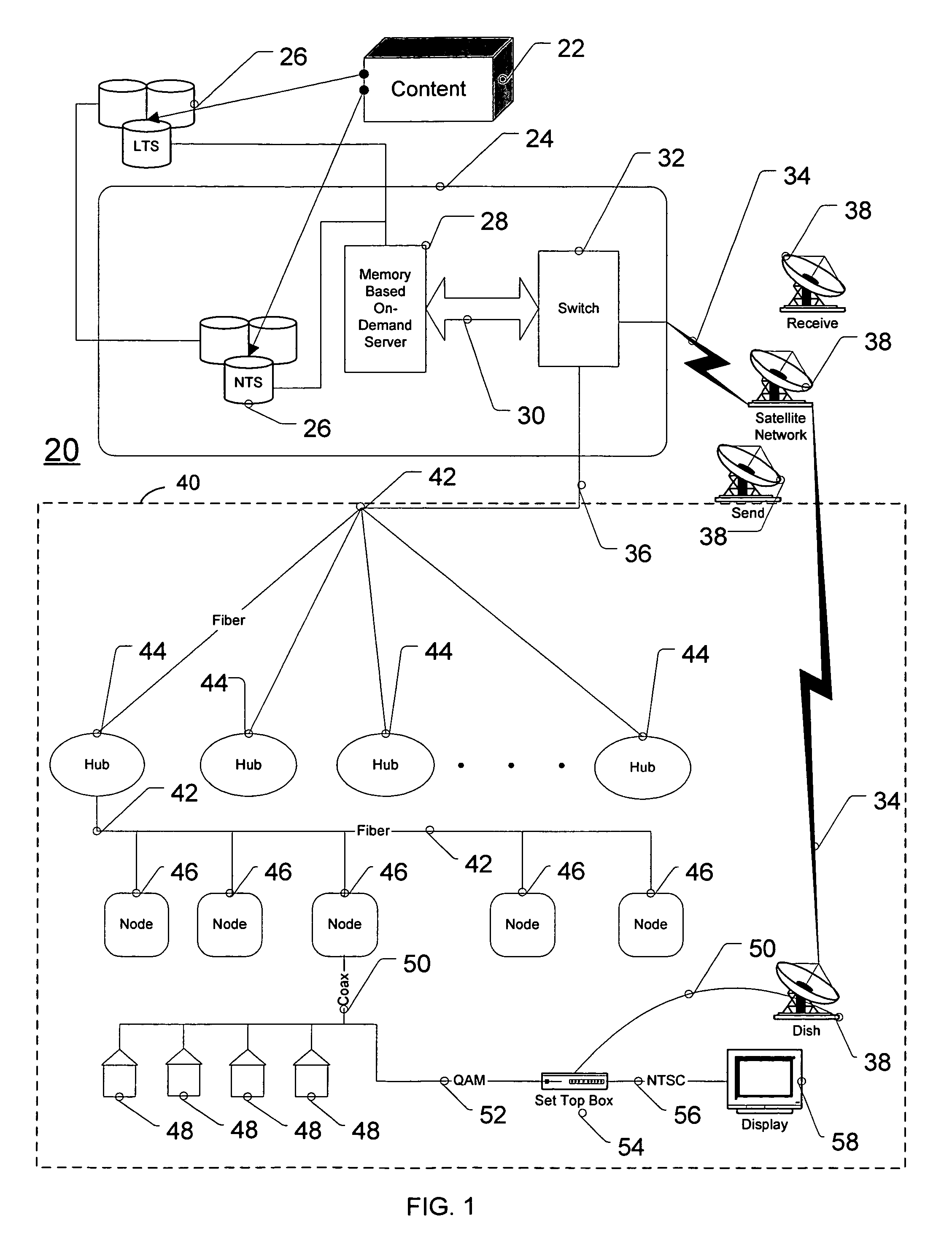Method and system for resource management in a video on-demand server
a resource management and video server technology, applied in the field of memory-based server resource management, can solve the problems of present on-demand servers, systems and servers do not recognize or otherwise account for concurrent usage of streaming content, and traditional on-demand servers have a disadvantage in their reliance on disk access to support streaming, etc., to achieve efficient playback, minimize disk access, and high utilization
- Summary
- Abstract
- Description
- Claims
- Application Information
AI Technical Summary
Benefits of technology
Problems solved by technology
Method used
Image
Examples
Embodiment Construction
[0024]Referring to FIG. 1, a volatile memory based on-demand system is shown generally as element 20. Volatile memory advantageously can be random access memory (RAM) readily available in 2 Gigabyte chipsets. The memory based on-demand system 20 is configured to distribute content 22 to end users such as, for example, in a network distribution system. A head end 24 of the system 20 obtains content from short- or long-term storage in response to requests sent across the network distribution system by the end user. The head end 24 is generally configured with storage 26, such as disk storage from either of the short- or long-term storage that contains the content to be streamed, a volatile, content addressable memory (CAM) based on-demand server 28 such as a B-1 VOD Server or SBB-1 manufactured by Broadbus Technologies, Inc., a wide bus 30 and a switch 32.
[0025]Referring to the description herein some terms should be defined for the benefit and clear understanding of the present inven...
PUM
 Login to View More
Login to View More Abstract
Description
Claims
Application Information
 Login to View More
Login to View More - R&D
- Intellectual Property
- Life Sciences
- Materials
- Tech Scout
- Unparalleled Data Quality
- Higher Quality Content
- 60% Fewer Hallucinations
Browse by: Latest US Patents, China's latest patents, Technical Efficacy Thesaurus, Application Domain, Technology Topic, Popular Technical Reports.
© 2025 PatSnap. All rights reserved.Legal|Privacy policy|Modern Slavery Act Transparency Statement|Sitemap|About US| Contact US: help@patsnap.com



